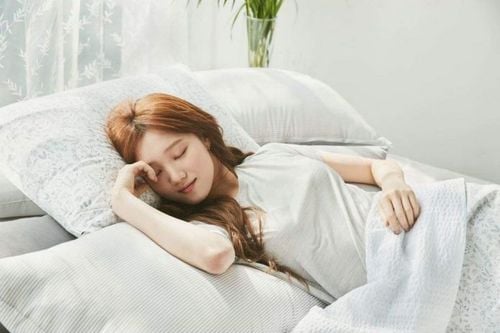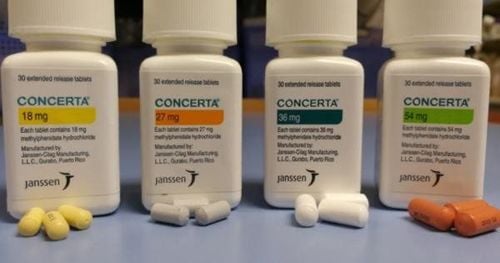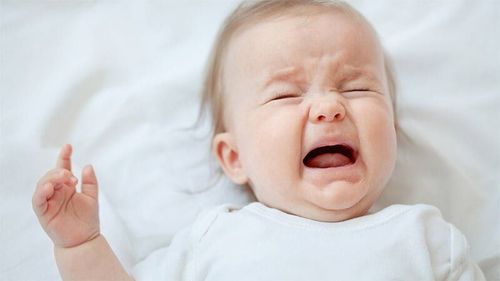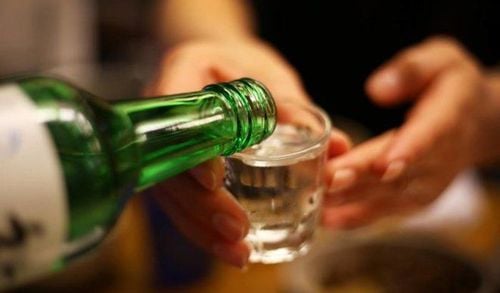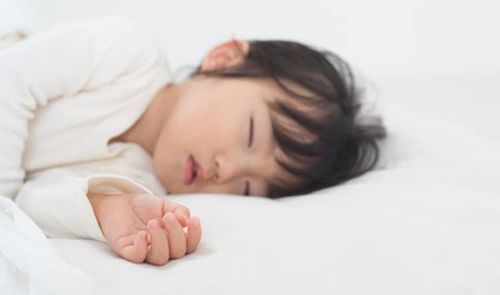This is an automatically translated article.
Posted by Doctor Ma Van Tham - Department of Pediatrics - Neonatology, Vinmec Phu Quoc International General Hospital
Sleep terrors are one of the most common sleep disorders in children. Sleep terrors most commonly occur in children between the ages of 1 and 8, appearing in stages 3 and 4 of slow sleep.
1. Manifestations of panic attacks during sleep in children
Symptoms of sleep panic attacks in children are:
Suddenly the child sits up or struggles, screaming and crying after sleeping for a few hours The child expresses fear, stress, restlessness, The mother's eyes were wide open but still seemed to be asleep, the mother could not calm the baby or could not wake the baby up. The attack lasts 10 to 15 minutes. After the baby fell asleep. The next morning, the child woke up with no memory of what had happened.

Trẻ đang ngủ bỗng giật mình la hét
2. Diagnosis of panic attacks during sleep according to the American Psychiatric Association DSM – IV
American Psychiatric Association DSM-IV diagnoses the progression of sleep panic attacks in children as follows:
A. Recurrent episodes of sudden awakening during sleep, mainly occurring in stage 1 The first three thirds of sleep and begin with a low, fearful cry.
B. The intensity of panic is the autonomic signs such as tachycardia, rapid breathing, sweating during the panic phase.
C. The patient does not respond to others' attempts to make them comfortable.
D. The patient does not recall dream details and often forgets.
E. The panic episode is the cause of symptoms of distress or dysfunction in social, occupational, and other functions.
F. The disorder is not the result of a substance or an actual disease.

Trẻ hoảng hốt có thể là dấu hiệu thần kinh thực vật
3. Treating sleep panic attacks in children
To treat sleep panic attacks in children, parents can guide children to relax before going to sleep: take deep breaths evenly, relax muscles, count according to breathing rhythms.
Families take measures to prevent possible bodily harm when a child has a sleep disorder: do not put the child in a high bed, do not place sharp or fragile objects near the bed, close the door take the stairs and the door, the window at night so that the child does not leave the house.
Help children return to normal sleep after having a night terror by comforting, comforting, comforting, and gently putting the child to bed
For children with frequent sleep disturbances can relieve frequency of attacks by: recording the time from when the child starts to sleep until the attack for 7 consecutive nights to know the pattern of when the child has a seizure. Then take the initiative to wake the child up 15 minutes before the usual attack. Let the child wake up for about 5 minutes, then put the child to sleep again
If it is determined that there is psychological trauma, it is necessary to advise the child and family to overcome this problem. If psychological measures are not effective, some children must be treated with anxiolytics such as Diazepam, tricyclic antidepressants such as Amitriptilin, or mood stabilizers such as Carbamazepine, valproate to reduce frequency bout.
To register for examination and treatment at Vinmec International General Hospital, you can contact the nationwide Vinmec Health System Hotline, or register online HERE.





